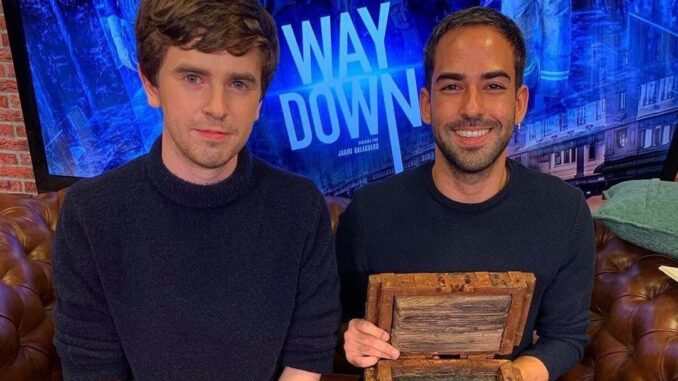
While “The Good Doctor” dazzles with gripping medical cases and jaw-dropping surgical brilliance, its emotional heartbeat comes from something less clinical but just as vital: the friendships and human connections that form behind the hospital walls. The relationships Shaun Murphy builds with his mentors, peers, and patients are what give the show its soul, reminding us that medicine is as much about compassion and connection as it is about precision.
One of the most defining relationships in Shaun’s life is with his mentor, Dr. Aaron Glassman. More than just a former teacher, Glassman becomes a father figure to Shaun—guiding him, pushing him, and fiercely advocating for his right to be a resident despite the skepticism of the hospital board. Their bond, rooted in shared history and mutual respect, evolves beautifully over the seasons. When Shaun falters, Glassman is there. When Glassman is diagnosed with cancer, Shaun is there. Their love is unspoken, but unmistakable.
Claire Browne, a fellow surgical resident, offers Shaun a different kind of friendship. With her empathy and emotional intelligence, Claire acts as a bridge between Shaun’s analytical mind and the emotionally charged world of patient care. She listens without judgment, explains without patronizing, and challenges him without ever questioning his worth. Through their friendship, the show emphasizes that vulnerability is not a weakness but a strength.

Morgan Reznick, often portrayed as brash and competitive, has her own complicated but evolving dynamic with Shaun. What begins as rivalry and misunderstanding matures into grudging respect and even quiet camaraderie. Morgan’s journey, including her battle with rheumatoid arthritis and career shift, becomes a compelling parallel to Shaun’s own path: both are forced to confront their limits, redefine their roles, and find new ways to contribute.
Then there’s Dr. Alex Park, the former police officer turned surgeon. His pragmatic, grounded nature complements Shaun’s idealism. Their friendship is one of mutual learning—Park helps Shaun navigate adult life, while Shaun’s clarity challenges Park’s assumptions. Their subtle moments—sharing a beer, discussing relationships, trading dry humor—are some of the show’s most authentic.
These friendships aren’t just background subplots. They’re essential to Shaun’s growth, both as a doctor and as a person. Through conflict and collaboration, each character becomes a mirror to Shaun, reflecting aspects of himself he has yet to understand. They celebrate his victories, endure his setbacks, and hold him accountable in ways that push him forward.
Importantly, these bonds also reflect the show’s commitment to portraying neurodiversity with respect. The friendships don’t rely on pity or charity. They are reciprocal. Shaun isn’t a burden to those around him—he is a gift. His honesty challenges hypocrisy. His logical thinking offers solutions others miss. His loyalty builds trust. And his friends, in turn, teach him patience, flexibility, and emotional nuance.
Episodes like “Friends and Family,” where Shaun grapples with defining what friendship means, or “Claire,” where he supports her in grief, show just how much emotional ground the character has covered. These stories don’t just depict friendship—they define it in the face of adversity, misunderstanding, and change.
Outside of work, we see these friendships play out in moments of levity and everyday life: game nights, dinners, road trips. These interludes humanize the characters beyond their surgical skills, reminding us that doctors are people first. They have doubts, dreams, and heartbreaks. They need each other not just in the OR, but in life.
And perhaps the most poignant testament to these friendships is how they evolve through challenge. When Shaun makes mistakes or faces emotional breakdowns, his friends don’t walk away. They lean in. They adapt. They learn, just as Shaun learns. In a world where differences can divide, “The Good Doctor” shows how understanding and patience can unite.
